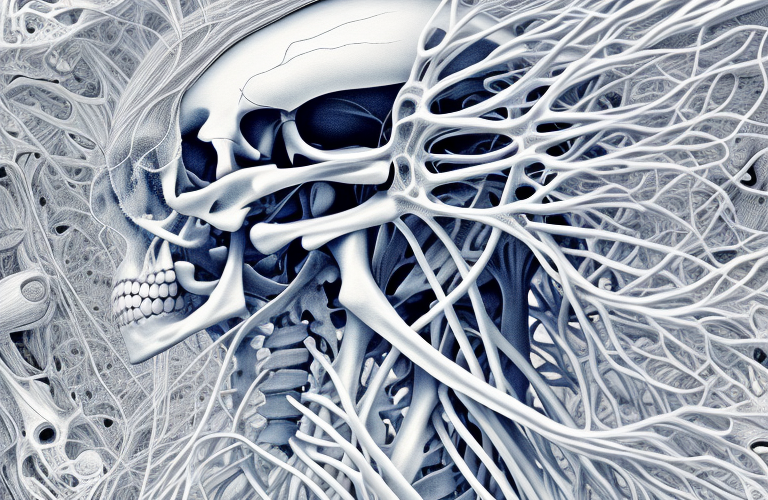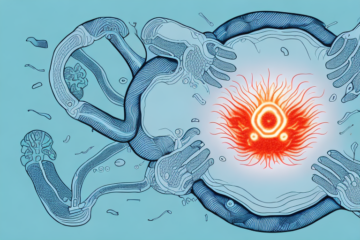As the foundation of our body, our feet play an integral role in our overall health and wellbeing. However, we often take our feet for granted until problems arise. In this article, we’ll explore the anatomy of the foot, common foot problems and their causes, the importance of regular foot exams, how to choose the right shoes for your feet, tips for proper foot hygiene and care, the benefits of regular foot massages, exercises to improve foot strength and flexibility, how to prevent and treat ingrown toenails, and various foot conditions and their treatments.
Understanding the Anatomy of the Foot
Each foot consists of 26 bones, 33 joints, numerous muscles, tendons, and ligaments. The arches of the foot are essential for weight-bearing and shock absorption, and the toes help with balance and movement. Proper alignment and distribution of weight are crucial for healthy and pain-free feet.
The foot is a complex structure that is designed to support the weight of the body and provide stability during movement. The arches of the foot are made up of three main components: the medial longitudinal arch, the lateral longitudinal arch, and the transverse arch. These arches work together to distribute weight evenly across the foot and absorb shock during activities such as walking, running, and jumping.
In addition to the arches, the foot also contains a network of muscles, tendons, and ligaments that work together to provide support and stability. The muscles in the foot are responsible for controlling movement and maintaining balance, while the tendons and ligaments help to connect the bones and provide additional support.
Common Foot Problems and Their Causes
Many factors can lead to foot problems, including genetics, aging, medical conditions, and improper footwear. Common foot problems include corns, calluses, blisters, Athlete’s foot, plantar warts, and foot odor. Additionally, improper foot mechanics and overuse can lead to other issues, such as plantar fasciitis, bunions, heel spurs, and neuropathy.
One of the most common foot problems is plantar fasciitis, which is caused by inflammation of the plantar fascia, a thick band of tissue that runs along the bottom of the foot. This condition is often caused by overuse, such as running or standing for long periods of time, and can be very painful.
Bunions are another common foot problem, which is characterized by a bony bump that forms at the base of the big toe. This condition is often caused by wearing tight, narrow shoes, and can be very painful and make it difficult to walk.
The Importance of Regular Foot Exams
Regular foot exams are crucial for early detection and prevention of foot problems. During a foot exam, a medical professional will check for issues such as proper alignment, skin conditions, circulation, and sensation. They may also offer advice on proper footwear and stretching exercises.
In addition to detecting and preventing foot problems, regular foot exams can also help identify underlying health issues. For example, poor circulation in the feet can be a sign of diabetes or peripheral artery disease. A foot exam can also reveal signs of arthritis or nerve damage. By catching these issues early, treatment can be started sooner, leading to better outcomes.
How to Choose the Right Shoes for Your Feet
Choosing the right shoes for your feet is crucial for maintaining healthy feet and avoiding pain or injury. Proper footwear should provide adequate support and cushioning, fit properly, and be appropriate for the activity. For example, running shoes should have more cushioning and arch support than sandals.
When shopping for shoes, it’s important to try them on and walk around in them to ensure they feel comfortable and don’t cause any discomfort or rubbing. It’s also a good idea to shop for shoes later in the day when your feet may be slightly swollen, as this can affect the fit of the shoe.
In addition to choosing the right shoes, it’s important to take care of your feet by regularly stretching and strengthening them. This can help prevent common foot problems such as plantar fasciitis and Achilles tendonitis. It’s also important to replace your shoes regularly, as worn-out shoes can cause foot pain and increase your risk of injury.
Tips for Proper Foot Hygiene and Care
Proper foot hygiene and care can prevent many common foot problems. Tips include washing your feet daily, drying them thoroughly, applying moisturizer, trimming your toenails properly, and rotating shoes to allow them to air out between uses. Additionally, avoiding walking barefoot in shared spaces and wearing properly fitting shoes can help prevent foot issues.
Another important aspect of foot care is to regularly inspect your feet for any signs of injury or infection. This includes checking for cuts, blisters, or redness, and seeking medical attention if any issues are found. It is also recommended to wear socks made of breathable materials, such as cotton or wool, to help keep your feet dry and prevent the growth of bacteria.
Furthermore, incorporating foot exercises into your daily routine can help improve foot strength and flexibility, reducing the risk of injury. Simple exercises such as toe curls, ankle rotations, and calf stretches can be done at home or during breaks at work. By taking care of your feet, you can improve your overall health and mobility.
The Benefits of Regular Foot Massages
Regular foot massages can improve circulation, reduce tension, and relax muscles in the feet and legs. Various massage techniques, including rolling a tennis ball or using a foot roller, can be done at home to alleviate pain and improve foot health.
In addition to the physical benefits, foot massages can also have mental health benefits. The act of taking time to care for oneself and engage in self-care can reduce stress and promote relaxation. Additionally, foot massages can stimulate pressure points that are connected to other parts of the body, promoting overall wellness.
Exercises to Improve Foot Strength and Flexibility
Stretching and strengthening exercises can improve foot mechanics and prevent foot problems. Simple exercises, such as calf stretches and toe curls, can improve flexibility and balance. Strengthening exercises, including using resistance bands, can also help prevent common foot issues such as plantar fasciitis.
In addition to stretching and strengthening exercises, there are other ways to improve foot health. One effective method is to wear proper footwear that provides adequate support and cushioning. This can help prevent injuries and reduce the risk of developing foot problems.
Another way to improve foot strength and flexibility is to incorporate activities such as yoga or Pilates into your exercise routine. These practices focus on balance, flexibility, and strength, which can all contribute to better foot health.
How to Prevent and Treat Ingrown Toenails
Ingrown toenails occur when the toenail grows into the skin, causing pain and infection. Proper nail trimming and wearing shoes that fit well can prevent ingrown toenails. Treatment options include soaking the foot, taking pain medication, and in severe cases, surgical removal of the nail.
It is important to note that attempting to remove an ingrown toenail at home can lead to further complications and should be avoided. If you suspect you have an ingrown toenail, it is best to seek medical attention from a podiatrist. They can properly diagnose the issue and provide the necessary treatment to prevent further pain and infection.
Various Foot Conditions and Their Treatments
Other foot conditions include plantar fasciitis, bunions, heel spurs, neuropathy, gout, and arthritis in the feet. Treatment options may include rest, ice, physical therapy, proper footwear, or in severe cases, surgery. It’s essential to speak with a medical professional about the best treatment plan for specific foot conditions.
It’s important to note that some foot conditions can be prevented by taking proper care of your feet. This includes wearing comfortable and supportive shoes, maintaining a healthy weight, and stretching before and after physical activity. Additionally, regular foot exams with a podiatrist can help detect any potential issues early on and prevent them from becoming more severe.
Conclusion
Our feet carry us through life, and proper foot health should be a priority. By understanding the anatomy of the foot, common foot problems, and how to prevent and treat various foot conditions, we can maintain healthy and pain-free feet. Regular foot exams, proper footwear, foot massages, exercises, and proper foot hygiene can all contribute to optimal foot health.
It is important to note that foot health can also have an impact on overall health. Foot problems can lead to changes in gait and posture, which can cause pain and discomfort in other parts of the body such as the knees, hips, and back. By taking care of our feet, we can prevent these secondary issues and improve our overall well-being.
Additionally, it is important to seek medical attention if you experience persistent foot pain or notice any changes in the appearance or function of your feet. A podiatrist can diagnose and treat a wide range of foot conditions, from minor issues such as corns and calluses to more serious conditions such as plantar fasciitis and diabetic foot ulcers.










